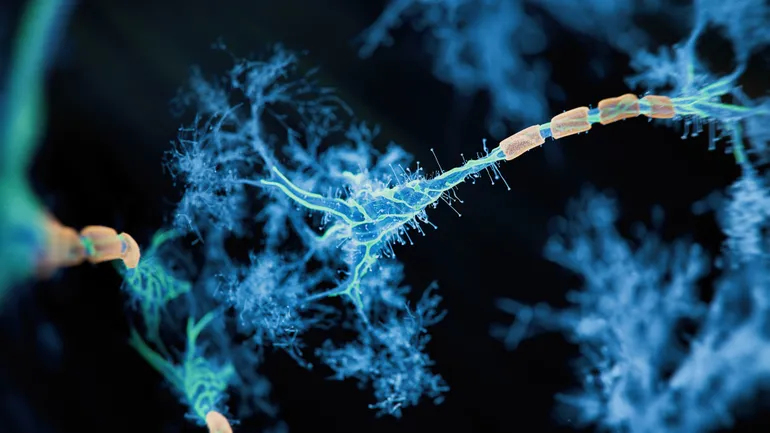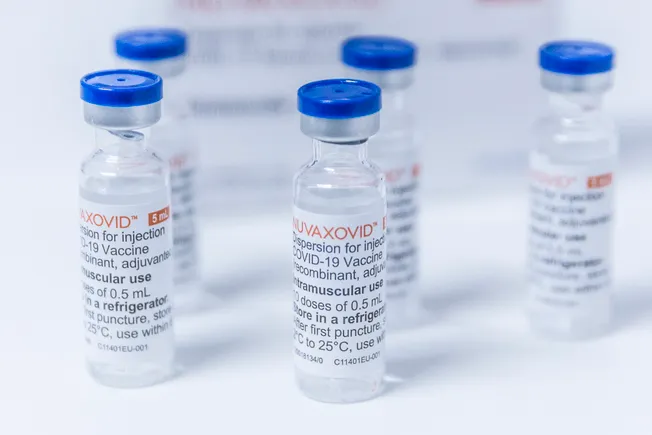How a Biogen drug set the stage for a new biotech targeting ALS


Trace Neuroscience, a freshly launched startup, is developing a type of genetic medicine it believes could help most, if not all, people with ALS.
It’s a bold idea, considering nearly every attempt to combat the nerve-destroying disease has ended in failure. Researchers still aren’t sure what causes 90% of cases. And in the U.S., the short list of drugs approved to treat ALS, or amyotrophic lateral sclerosis, got shorter still this year, as a once-promising medication hit a major setback that ultimately got it pulled from the market.
Yet Trace was still able to fundraise $101 million from a group of prominent biotechnology investment firms that includes Third Rock Ventures, Atlas Venture, RA Capital Management and Alphabet’s venture capital arm, GV. Jeffrey Tong, a Third Rock partner who’s now on Trace’s board of directors, says there are a few reasons why the startup earned his firm’s support.
One was the company’s underlying science. It was built on recent discoveries from the labs of Aaron Gitler, a Stanford University professor; Pietro Fratta, a professor of cellular and molecular neuroscience at University College London; and Michael Ward, a senior investigator in the National Institutes of Health’s neurological disorders division. Almost at the same time, these labs identified connections between an important RNA-processing molecule and a protein that’s often impaired in people with ALS and other neurodegenerative disorders.
Another selling point, according to Tong, was the precedent set by Biogen’s Qalsody.
Like Trace’s medicine, Qalsody is what’s known as an antisense oligonucleotide, meaning it regulates protein production by binding to RNA. Qalsody flunked the main trial designed to show it can slow the functional decline associated with ALS. The drug was still approved last year, though, due to its apparent effects on “neurofilament light chain,” a protein tied to nerve cell damage.
Trace’s CEO, Eric Green, plans to incorporate those learnings into the development plans for his company’s drug, which is on track to enter human testing in early 2026.
Green has helped set up multiple Third Rock portfolio companies. He co-founded the precision medicine developer Maze Therapeutics and served as head of translational research at heart drug startup MyoKardia. In an interview with BioPharma Dive, Green explained why his new, big-swing endeavor resonated with investors.
The following conversation has been edited and condensed for clarity.
BIOPHARMA DIVE: Was there a concerted effort to go to these different parties and ask them to come together and build a single company, rather than three separate ones?
ERIC GREEN: Absolutely. This, to me, was just a central part of how I thought about this. I wanted us to join forces and not dilute our efforts across three companies, because everybody here brings different expertise. It’s a really nice complementary team.
This is my third go around doing this with Third Rock. One of the things I have learned over the years is that the more you can bring together a group of diverse experts who understand an area of biology, the greater chance you’re going to have to be successful in translating that into a medicine.
We have an academic world that I think is very much oriented toward independent discoveries and independent credit. That makes perfect sense from an academic standpoint, but as we think about trying to make this into a medicine, we need to join forces.There really is that shared goal and shared mission here, recognizing that we’re stronger together.
Atlas, RA, GV — what about those firms made you want them to be part of your investor syndicate?
GREEN: The first thing I had in mind was to allow us to raise a sum of money that would allow us to get through what we see as the key clinical data points … where we’re going to be able to learn about how this medicine is working in people with ALS.
But [another piece was] to bring together a diverse set of voices. Atlas, for example, built a number of different RNA therapy and oligonucleotide companies. That was something really important to me, thinking about how we can build companies. [We wanted] a syndicate that has different perspectives, both really early company creation — in the case of Third Rock and Atlas — but then also people who think about company growth and some of the longer-term horizons. This was where having a group like RA has been really helpful to us. And similarly, with Google Ventures, a group that really sees companies across the life cycle, from very early discovery all the way through to clinical development and commercialization.
One of the things that, to me, is a little unusual, maybe particularly exciting, about this opportunity is that we’re very early. We’re not far from the original discovery. But there’s a potential here to move really quickly, and to go from being a discovery company to a company that’s generating really meaningful clinical data. And in this indication, meaningful clinical data can have a very direct path towards getting a drug on the market.
You raised $101 million. Why stop there, or set that as the goal, in terms of fundraising?
GREEN: We want to build an R&D plan that we think is the right one, and then finance that. Not, “Let’s test the waters and see how much money we could raise.” Yes, we could have certainly gotten $1 more than [our goal] and so, by definition, we were oversubscribed. But I have a pet peeve about that myself. Our goal was to set out to raise the amount of money we needed to support the R&D plan, and that’s what we did. In general, we’re really happy with the round we put together. And we’ll have a lot of options with this syndicate to take the next steps.
Your company is at the intersection of genetic medicine and neuroscience, two research areas that could be seen as high-risk. What were the biggest concerns among these investors? Do you think you’ve alleviated them?
GREEN: ALS, and neurodegenerative diseases more broadly, are an area where there’s been a lot of disappointment.
It was really important for me to be able to convey what we thought was different about this opportunity. I can summarize it with three components. Here is this focus on robust human genetics as our guide to give us confidence we’re going after a mechanism relevant in people with ALS, rather than in some cell or animal model of the disease. The quality of the human genetics evidence here is exceptionally high, both because it’s been reproduced across so many different cohorts, but also because of this relationship with disease progression and survival. And that’s unusual, as opposed to having a relationship with just the risk of disease. It really gives us confidence there’s a window to intervene on this mechanism after people are diagnosed.
But genetics is not enough. You need to understand what the mechanism is by which the gene is working. And this is where that set of discoveries I described from Aaron and Pietro and Michael was so critical of saying we really understand how this gene is working. This has been, even with some of the previous genetic targets, one of the limitations. We don’t exactly know what it is that’s going on, and therefore we don’t exactly know what we want to do therapeutically.
Then the third piece was, this is a mechanism that really is amenable to a particular modality, in this case, antisense oligonucleotides.
Where we are today, we have a lot more confidence we actually have a particular molecule that has all … those properties we’re looking for – that can potently correct splicing, both in cells and animal models of disease, and that can do that in a way that is sufficiently well tolerated so we’ll be able to have some flexibility in how we dose in the clinic.
Trace remains a single-asset company. Is that a harder sell right now, given that biotech investors appear at least somewhat more risk averse?
GREEN: This was something I spent a lot of time thinking about, because my prior experience at MyoKardia, Maze, other companies, has been in broader, platform-oriented companies. So this was a big part of the thought process I had as we went from this discovery to: What’s the right company?
A big part of what made the single asset make sense is it allows us to really get to those important clinical inflection points on a Series A raise, as opposed to saying we’re going to explore a bunch of different things, but not be able to get any of them to the point where we get the meaningful clinical data. That was also something that really resonated with investors, because I think there is a real focus on being able to get that meaningful clinical data. That was, in some ways, a tailwind for us.
There are some aspects of increased risk when you think about a single asset company. So for us, it was being able to have things far enough along by the time that we launched, that we felt like we had mitigated a lot of those risks. We felt strongly about the genetics, we felt strongly about the mechanism, and we felt strongly enough about being able to find a molecule that could meet our criteria. The risk of not getting to the point where we can test this in patients is relatively mitigated. This wouldn’t have made sense when we were talking in 2020 and said, “Oh, here’s an interesting idea, and here’s an interesting mechanism, but we don’t know whether it’s going to be possible to find a molecule.”
In some ways, it became an advantage. Now we can really focus the organization on being able to get that critical data. And then after that think about how we might broaden the company, whether it be to other indications or other ways of attacking this target.
What’s the current development timeline investors envision for your asset? What data represent a go-no go decision for Trace and its investors?
GREEN: We’re on track with our lead molecule to be in the clinic by early 2026. We’ll be able to, very quickly, do these trials in patients, so that the first studies have the opportunity to show us meaningful clinical data.
This is one of the places we’re able to benefit from some of the work that was done with [Qalsody], even though the focus there is on a very rare population of people with ALS. A lot of the things they learned with respect to biomarkers, in particular, are very relevant for how we think about our clinical development. [In particular] they were able to take advantage of neurofilament as a biomarker of disease progression that really correlated well with the ultimate changes we all hope to see, which is improvements in how people feel, function and survive with ALS.
I think that gives us a much stronger toolkit for evaluating our molecules than we had before. So we’re obviously going to be looking for those clinical signs, but having some strong biomarkers will help accelerate and give us more tools to see proof-of-concept in the clinic earlier.
This post has been syndicated from a third-party source. View the original article here.




